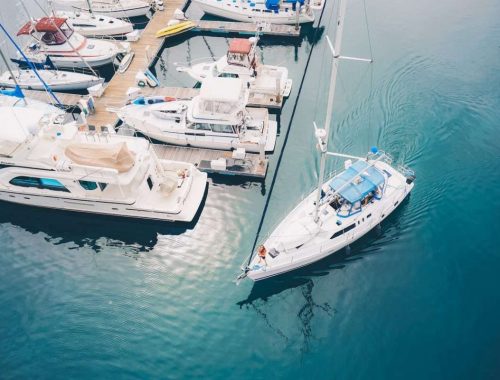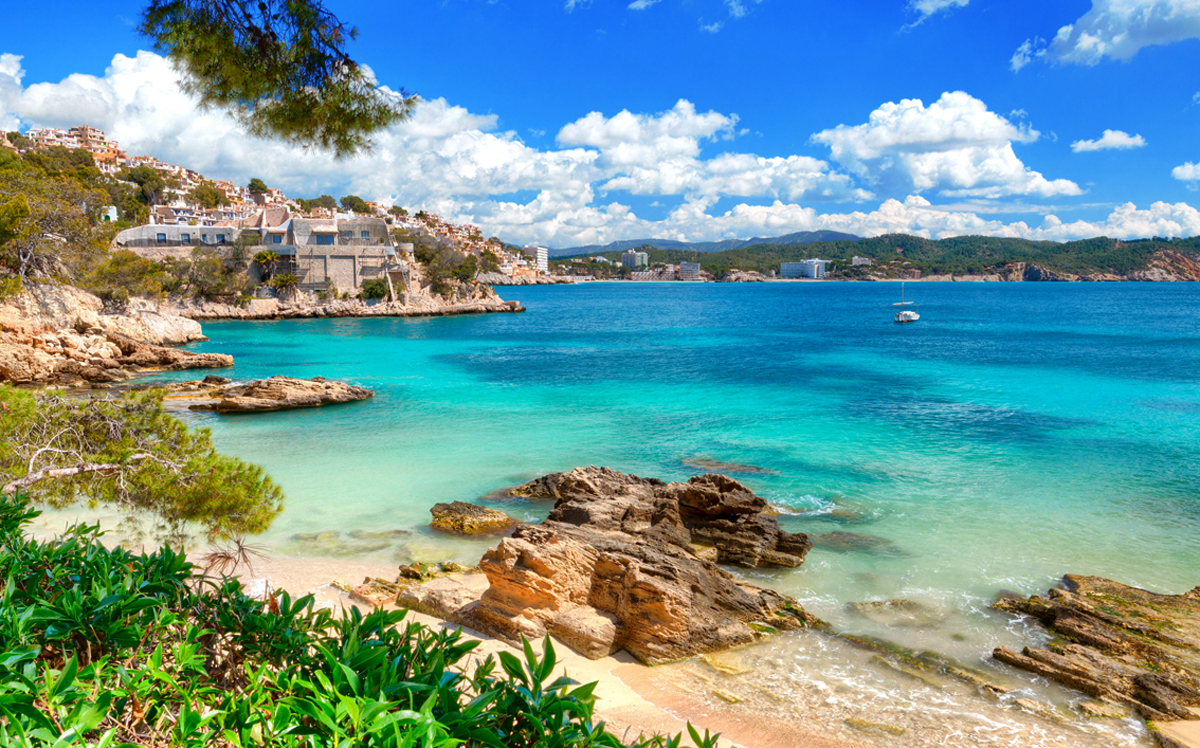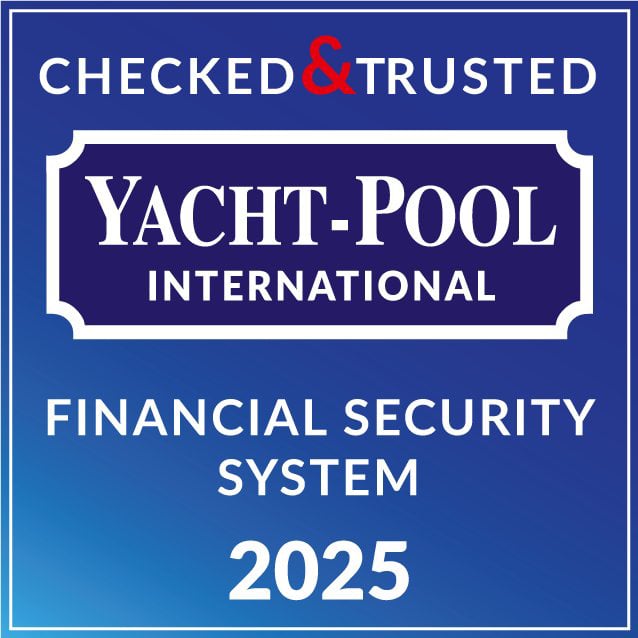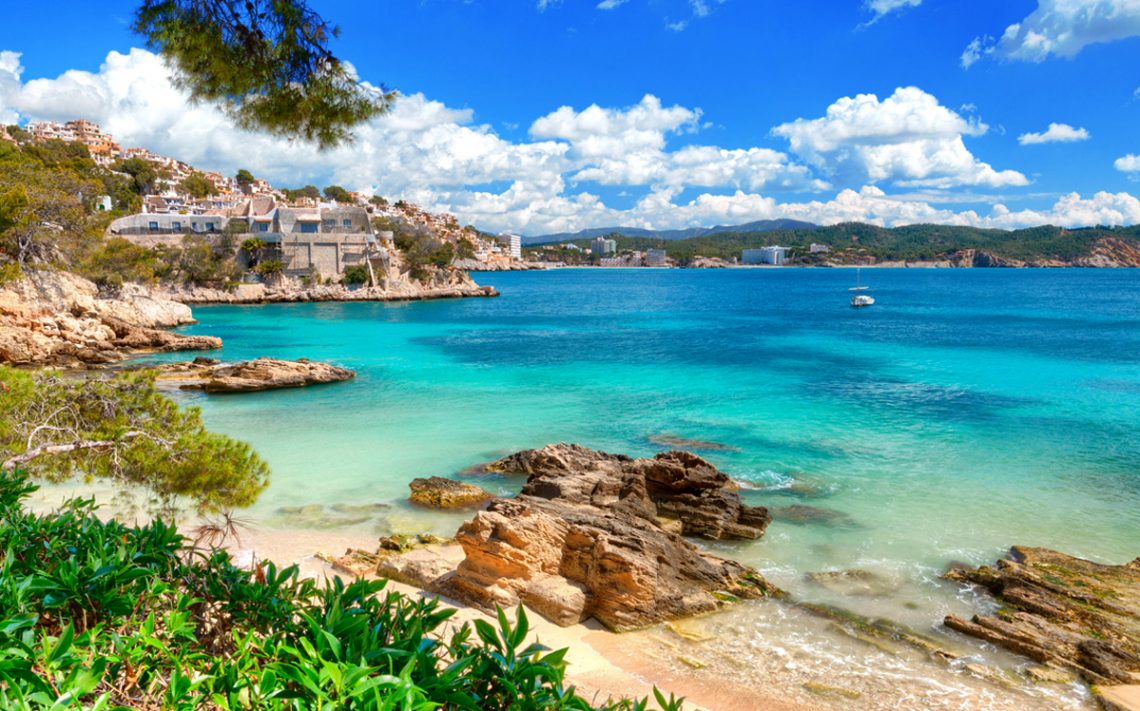
Jedrenje između Palma de Mallorce i Menorce, bisera Baleara
Španjolski arhipelag Baleara nevjerojatno je mjesto za jedrenje, čak i u kasno ljeto. Odmah uz obalu kopnene Španjolske nalaze se prekrasne pješčane plaže smještene u zaštićenim malim uvalama, predivni obalni gradovi koji pružaju čarobnu mediteransku atmosferu te savršeno očuvani morski parkovi. Najbolje vrijeme za plovidbu ovim vodama je od lipnja do sredine rujna, dok su travanj i svibanj idealni mjeseci za izlete u prirodu te posjet mjestima i gradovima.
U ovoj ruti usredotočujemo se na istraživanje dvaju otoka, Mallorce i Menorce. Mallorca je najveći otok arhipelaga, s bogatom pomorskom prošlošću koju i danas odražavaju njezine veličanstvene palače, impozantne crkve i samostani te elegantna sela. Menorca, s druge strane, nudi netaknutu prirodu s malim uvalama, besprijekornim plažama i brojnim gostoljubivim lukama.
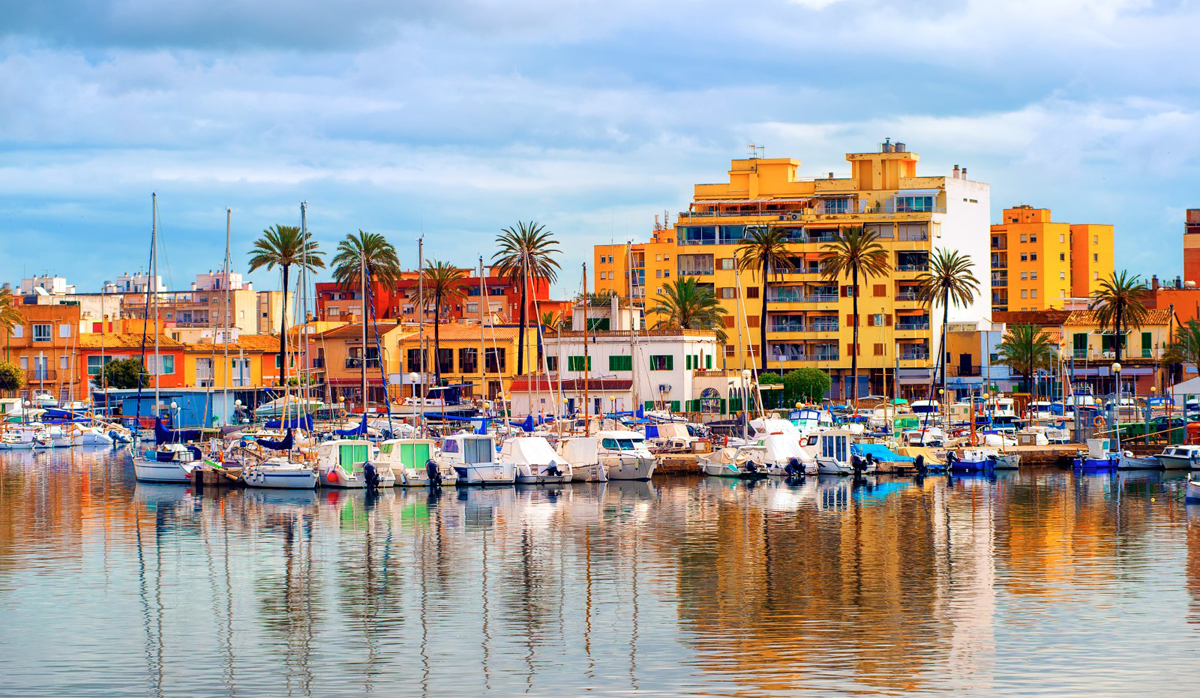
Dan 1, Palma de Mallorca, ukrcaj
Započinjemo našu krstarenje u glavnom gradu Baleara, prekrasnoj i povijesnoj Palmi de Mallorci. Manje od 5 milja od zračne luke, nautička baza nalazi se odmah na gradskoj rivi. Nakon obavljenog check-ina na brodu, dan možete iskoristiti za obilazak starog grada s vijugavim kaldrmiranim ulicama koje se protežu između tapas barova, restorana, kafića i prekrasnih građevina u gotičkom stilu, počevši od veličanstvene i impozantne Katedrale svete Marije. Zanimljivi su i Arapske kupelji, svjedoci slavne prošlosti Mallorce pod arapskom vlašću, kao i Muzej sobrassade, jednog od najpoznatijih proizvoda mallorčinske gastronomije: mekanog, začinjenog salama sličnog ‘nduji. Vrijedi posjetiti i Fundació Joan Miró, smještenu u tradicionalnoj finki u kojoj je sam umjetnik radio, te muzej Es Baluard koji izlaže djela Picassa, Magrittea i Cézannea.
Ako radije želite provesti nekoliko sati na plaži, S’Arenal je najveća plaža u Palmi de Mallorci, gdje je pijesak, kao i uvijek na ovom otoku, vrlo fin i bijel te okružen mediteranskim raslinjem. Plažu često posjećuju i ljubitelji jedrenja na dasci i kite-surfa. Alternativno, možete istražiti Cala Pastilla na istoku glavnog grada i Cala Estancia, odmah izvan grada, odakle započinju i mnoge pješačke i biciklističke staze.
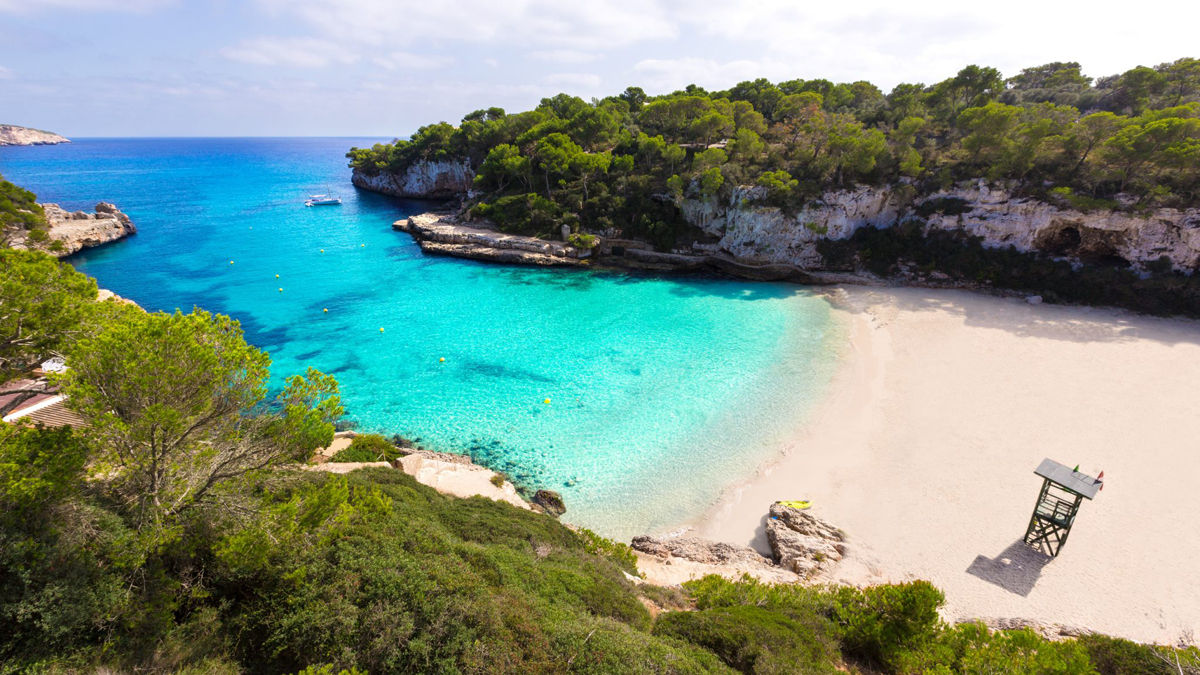
Dan 2, Palma de Mallorca – Cabrera, 28 milja
Otprilike sat vremena plovidbe južno od otoka Mallorce čeka nas arhipelag Cabrera. Riječ je o jednom od najbolje očuvanih morskih područja duž cijele španjolske obale i jednom od najvažnijih primjera morskog života u cijelom Sredozemlju. Park je okružen zelenilom mirisnih biljaka poput kleka, tršlje i alepskog bora te je podijeljen na 19 otočića i otoka. Među njima se ističe upravo Cabrera, najveći otok, bogat uvalama, liticama i nekoliko malih plaža s pogledom na tirkizno more gdje raste posidonija. Iste te vode stvaraju luminiscentne efekte u raznim morskim špiljama i pećinama koje se nalaze ispod stijena duž obale, poput Modre lagune, jedne od glavnih atrakcija parka, ili Sa Cova Blava.
Za istraživanje Cabrere može se pristati u luci otoka, uz prethodno dobivenu dozvolu. Nakon iskrcaja, posjetiteljima je na raspolaganju osam samostalnih ruta koje omogućuju razgledavanje starog svjetionika ili prekrasnog dvorca Castillo de Cabrera, izgrađenog u 16. stoljeću, koji je oduvijek predstavljao najbolju vidikovcu na otoku.
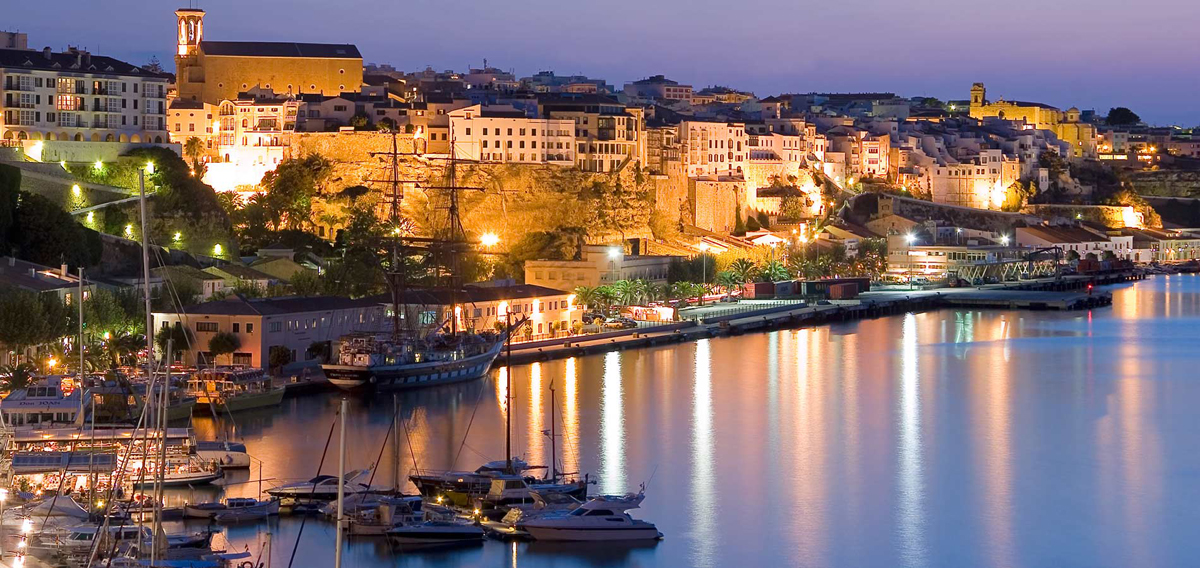
Dan 3, Cabrera – Mahon, 75 milja
Otpuštamo konope i krećemo prema Mahónu, glavnom gradu Menorce, koji se razvija oko najveće prirodne luke na Sredozemlju te čuva dojmljivu kombinaciju antičke i moderne arhitekture, tragova prošlosti koja seže sve do Kartagineza, i živahne atmosfere koja se osjeća u brojnim lokalima i trgovinama na rivi. Stari grad povezan je s čarobnom lukom dugim stubištem koje vodi do šetnice Baixamar, pješačke zone uz obalu punu jahti, s kafićima, trgovinama i restoranima.
Šetajući uskim uličicama centra nailazi se na stare crkve, poput one svete Marije na Trgu España, gdje se nalazi i gradska vijećnica; to je ujedno i najveća crkva na otoku. Zanimljive su i Iglesia del Carme s klaustrom samostana u kojem se u nekadašnjim ćelijama redovnica nalazi slikovita svakodnevna tržnica, kao i Iglesia San Francisco de Asís, podignuta u 18. stoljeću na ruševinama gotičkog hrama.
Za bolje upoznavanje povijesti Mahóna i Menorce nezaobilazan je posjet Museu de Menorca, smještenom u starom franjevačkom samostanu izgrađenom krajem 17. stoljeća. Vrijedi vidjeti i impozantni Pont de Sant Roc, gotički portal iz 1359. godine podignut uz nekadašnje srednjovjekovne zidine grada.
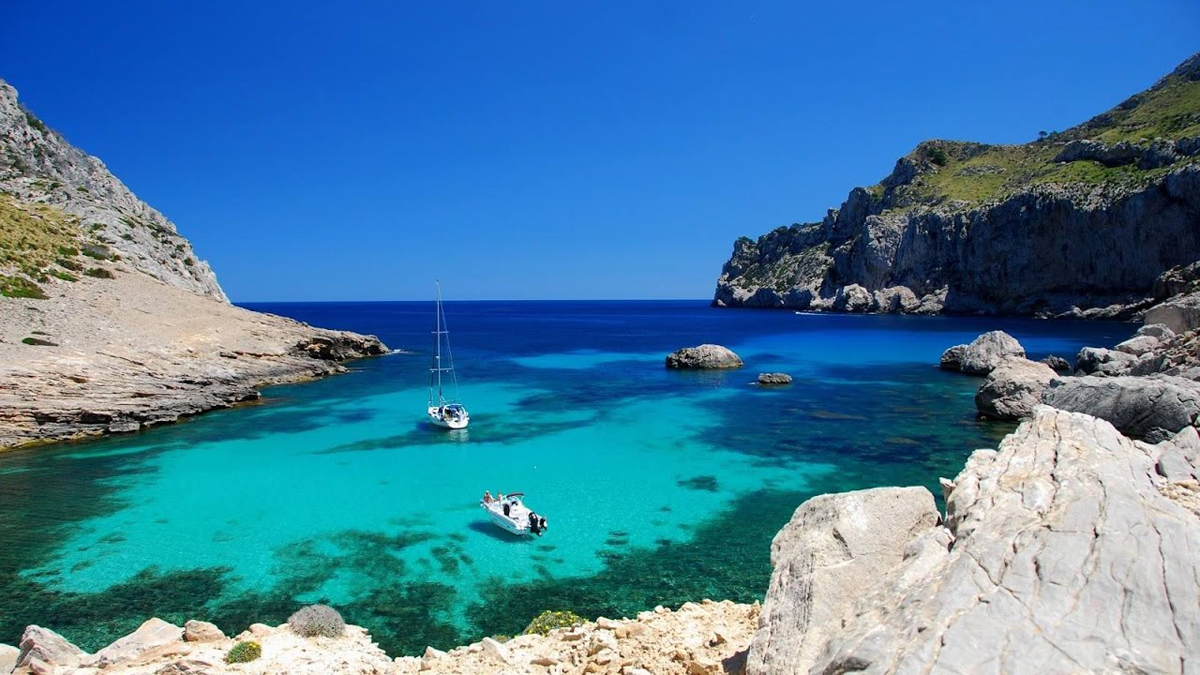
Dan 4, Mahon – Fornells, 20 milja
Vrijeme je za plovidbu sjevernom obalom Menorce, gdje se nalazi Fornells, mirno i prekrasno ribarsko selo čija je uvala jedan od najvećih prirodnih luka na ovom balearsko otoku. Upravo oko uvale nalaze se nekoliko malih plaža i otok Sargantanes na kojem se nalazi utvrda izgrađena tijekom engleske vladavine. Uličice oko luke pune su turista i lokalnih ribara. Ne nedostaju ni konobe koje poslužuju tzv. “caldereta de langosta”, odnosno izvrstan jastučni gulaš, tradicionalno jelo ovog ribarskog mjesta.
Fornells je mjesto koje je inspiriralo mnoge umjetnike i još uvijek čuva brojne tragove svoje prošlosti, kada je predstavljao hrabri obrambeni bastion Menorce. To potvrđuju ostaci Talaia de la Mola, impozantne vojne utvrde. Tu je i dvorac Sant Antoni, dodatna vojna obrana iz 17. stoljeća izgrađena nakon strašnog napada gusara 1558. godine s ciljem nadzora pristupa luci. Posebno su zanimljivi i megalitski grobovi poznati kao “Navetas”, grobnice iz brončanog i željeznog doba u obliku preokrenute lađe.
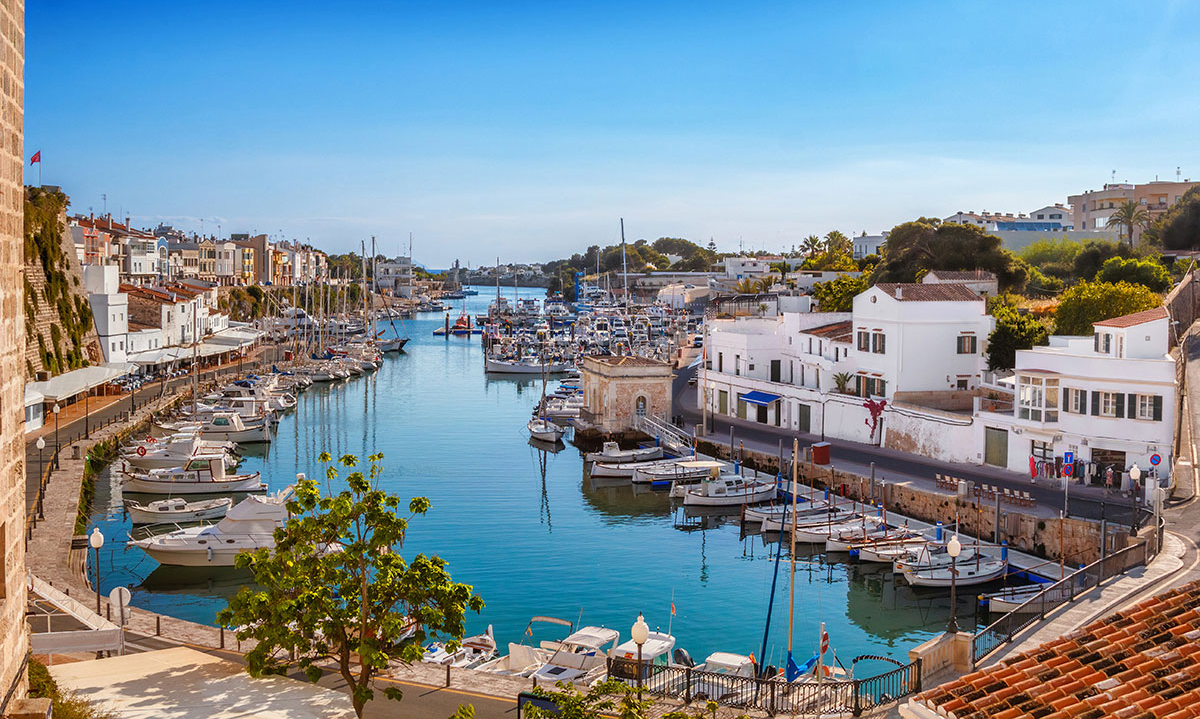
Dan 5, Fornells – Ciutadella, 25 milja
Naša sljedeća luka je Ciutadella, drugi najvažniji grad Menorce, bogat šarmom, povijesnim zgradama, arheološkim nalazištima i prekrasnim plažama. Nalazi se uz zapadnu obalu otoka i nudi nekoliko pristaništa za one koji dolaze brodom. Stari grad, lako dostupan iz luke, karakteriziran je mrežom uskih uličica okruženih palačama, crkvama i trgovinama. Srce grada je Plaça Es Born, stari srednjovjekovni trg vojne namjene, na čijem se središtu nalazi obelisk u spomen na žrtve turske invazije 1558. godine. Na ovom trgu nalazi se i Gradska vijećnica, izgrađena u 13. stoljeću na mjestu starog arapskog alkazara. Nedaleko se nalazi i Ciutadellina katedrala iz 14. stoljeća u katalonsko-gotičkom stilu sa svojim izvornim minaretom koji je kasnije pretvoren u zvonik.
Vrijedi posjetiti i Gradski muzej smješten u bastionu Sa Font, zgradi izgrađenoj 1677. godine kao dio obrambenog sustava grada. Smješten na litici blizu luke, muzej omogućuje detaljnije upoznavanje ne samo s poviješću grada, već i cijelog otoka Menorce.
Osim povijesnih znamenitosti, Ciutadella nudi i neke od najljepših plaža otoka. Među najpoznatijima je Cala en Bosc, gradska plaža poznata po sitnom i mekanom pijesku te polako se spuštajućem dnu. Prekrasne su i Cala Santandria, pješčana plaža uokvirena visokim stijenama uz kristalno more, te Son Saura, okružena gustom borovom šumom i osamljena.
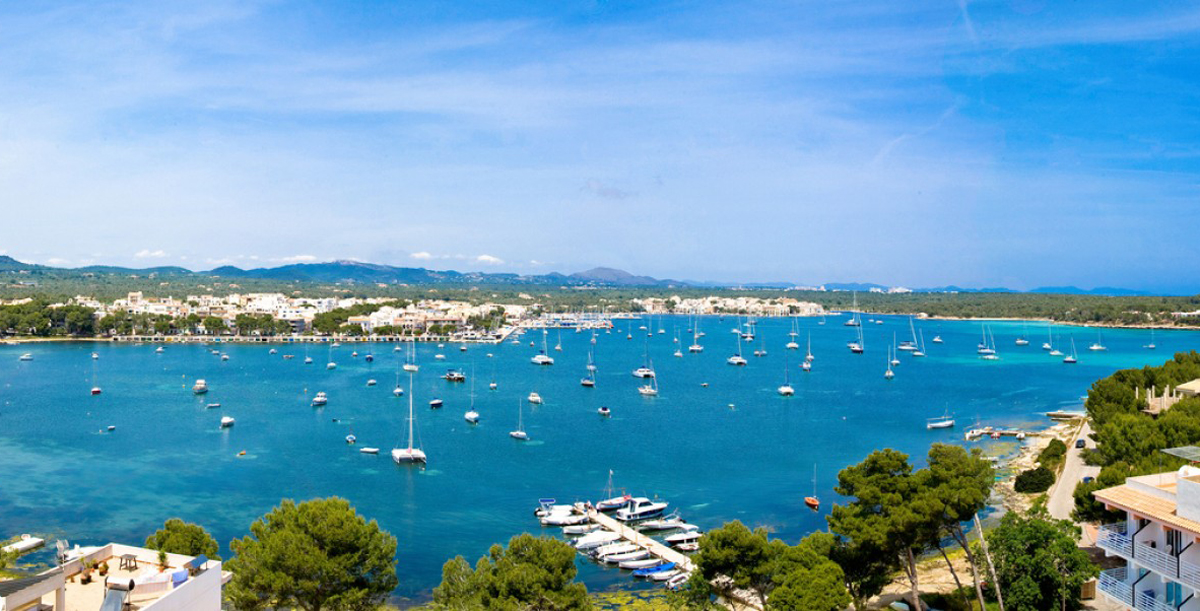
Dan 6, Ciutadella – Porto Colom, 42 milje
Usmjeravamo pramac prema luci Porto Colom na jugoistočnoj strani Mallorce. Uvala Porto Colom, duboko urezana u obalu sa uskim ulazom, predstavlja fantastičnu prirodnu luku i sigurno zaklonjeno mjesto za gotovo sve vjetrove, osim jakog Scirocca. Pristup sjevera otkriva se tek pri samom pristajanju, a ulaz je lako prepoznatljiv po uočljivom svjetioniku Punta de ses Crestes s bijelim i crnim horizontalnim prugama. Sam ulaz nije opasan, ali unutrašnjost uvale ima plitka područja, stoga je potrebno ući slijedeći dobro obilježeni kanal s crvenim i zelenim bojama. Druge uvale pogodne za sidrenje su Cala Marsal, 900 metara od luke, zatim Cala Mandrago, Cala Barca, Porto Petro, Cala Egos i Cala d’Or. Sve su prekrasne s prozirnom vodom i finim pijeskom.
Porto Colom gleda izravno na uvalu i još uvijek je autentično selo u očuvanom prirodnom okruženju, za razliku od urbanizirane zone Palme. Nudi brojne restorane s ribom i morskim plodovima te trgovine lokalnim rukotvorinama, gdje se mogu pronaći perle iz Manacora, poznate diljem svijeta. Osim toga, nude se predmeti od stakla i keramike izrađeni prema tradicionalnim tehnikama, kao i predmeti od kovanog željeza, bakra i maslinovog drva.
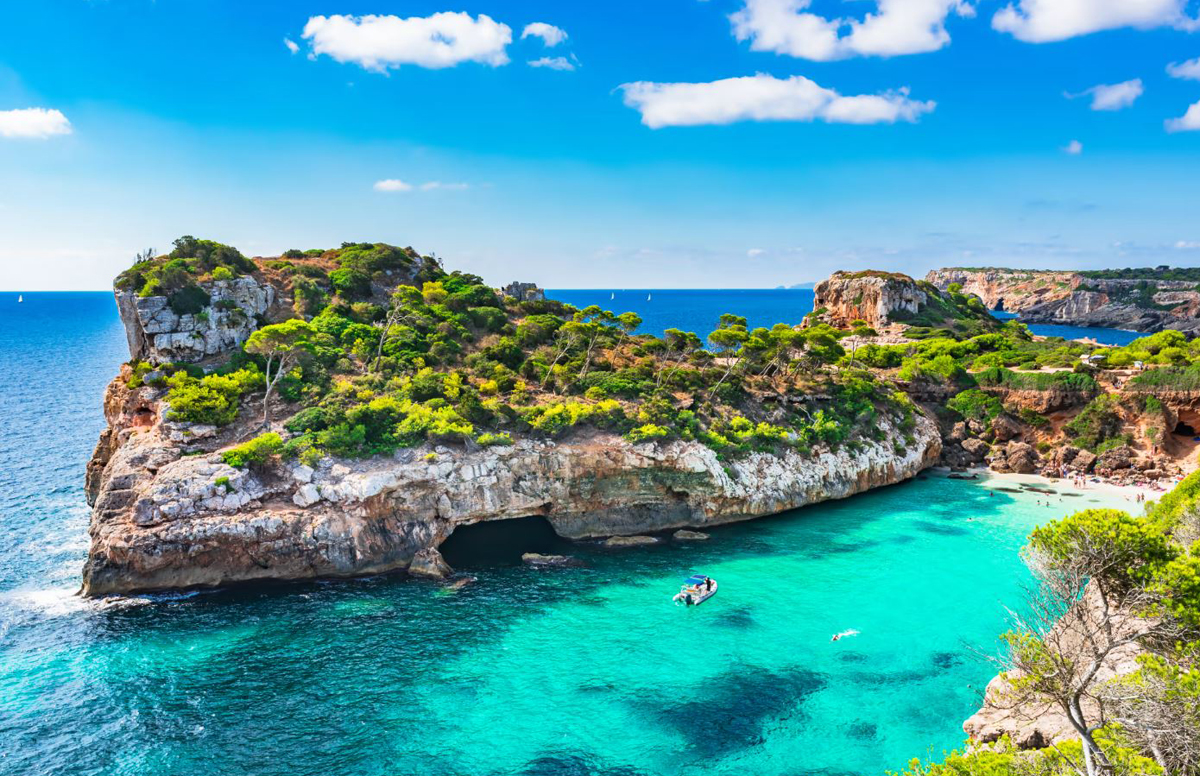
Dan 7, Porto Colom – Es Carbo – Palma de Mallorca, 45 milja
Posljednja stanica prije povratka u našu nautičku bazu u Palmi de Mallorci je netaknuta plaža Es Carbo. Duga preko kilometar, smještena je na južnoj obali otoka i okružena prekrasnim dinama od finog pijeska, borovima i niskim pustinjskim grmljem. Mjesto je poznato, ali potpuno netaknuto, daleko od buke, idealno za opuštanje, plivanje ili ronjenje s maskom i disalicom. Nekoliko stotina metara od obale, usred kristalno čistih voda, nalazi se otočić Isla Moltona, privlačna destinacija za iskusnije plivače. Vode su plitke i obično su mirne, uz pokoji povremeni val. S plaže se pruža prekrasan pogled na otok Cabrera.
Najbliži centar Es Carbó je Colonia Sant Jordi, grad koji je najveći na južnoj obali Mallorce, iako nudi ugodan, spor i opušten ritam života. Prostire se oko široke uvale i ima lijepu rivu s trgovinama, restoranima i mogućnostima za vodene sportove. Također je moguće posjetiti i druge plaže koje se protežu uz obalu od Colonia de Sant Jordi do svjetionika Cap de Ses Salines. Ovaj posljednji je šarmantno selo s nekoliko restorana, butika i lijepim igralištem za djecu.
Ukratko, još jedan intenzivan dan uživanja u španjolskom suncu prije povratka u prekrasni Port de Mallorca i oproštaja od Baleara.
Možda Bi Vam Se Svidjelo
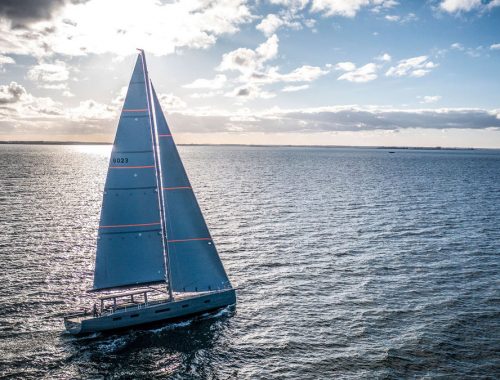
Tramontana, vjetar sa sjevera koji dodaje adrenalin krstarenju
30/09/2025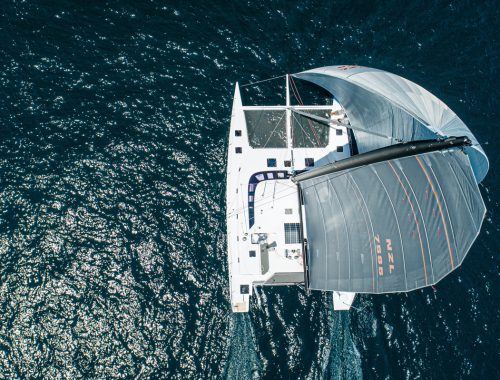
Plovidba katamaranom: što učiniti kada se vrijeme pogorša
30/04/2025